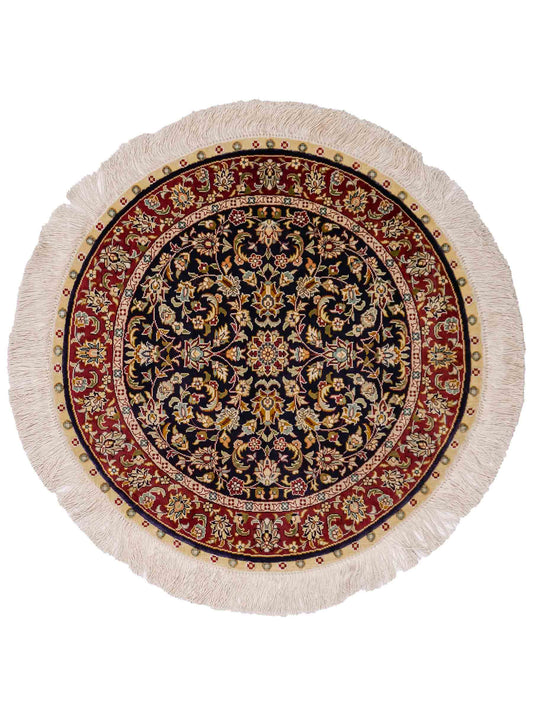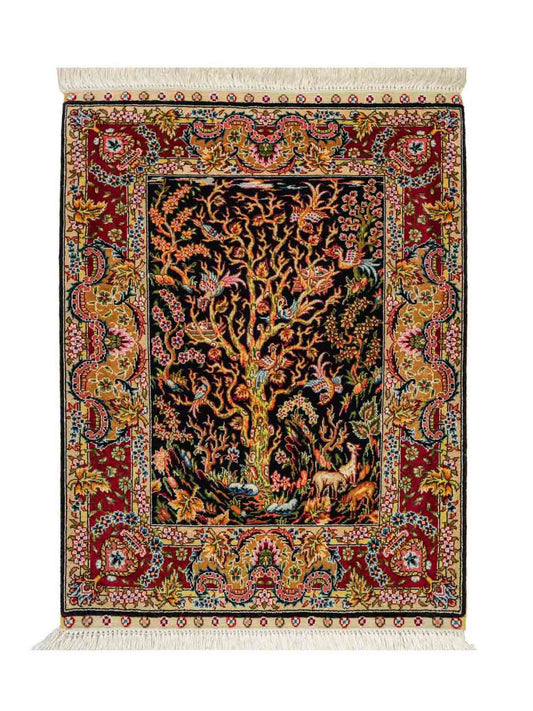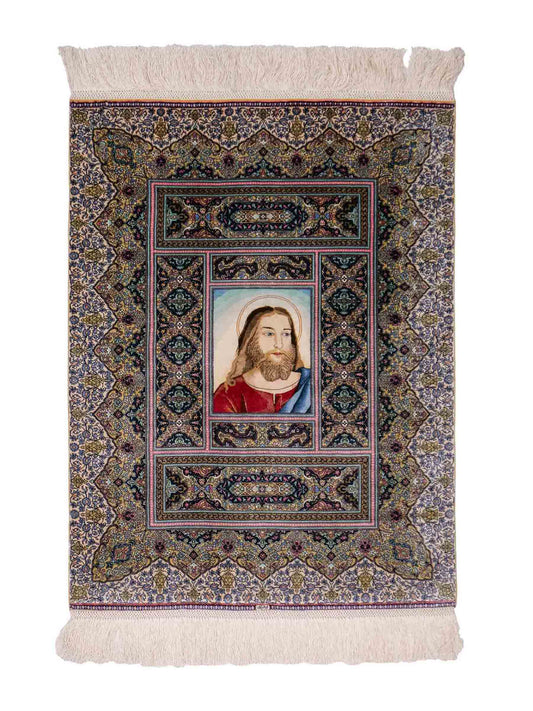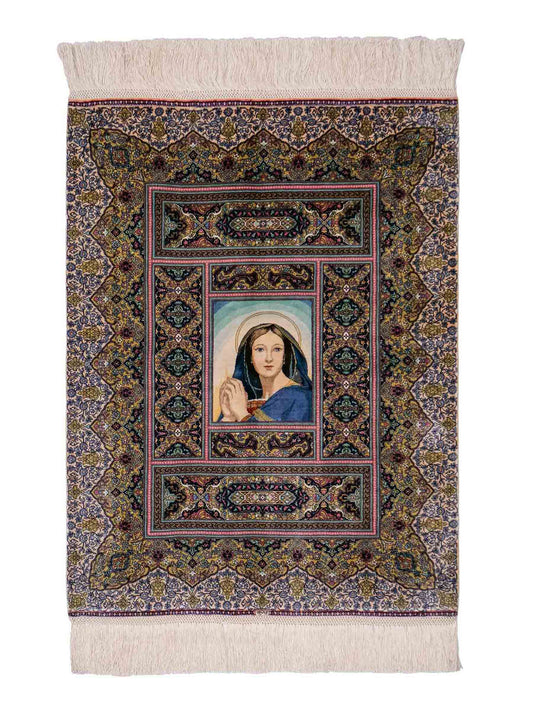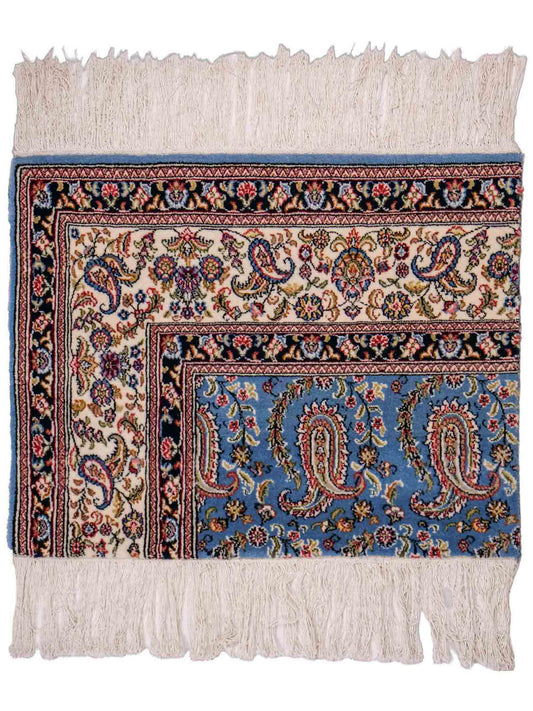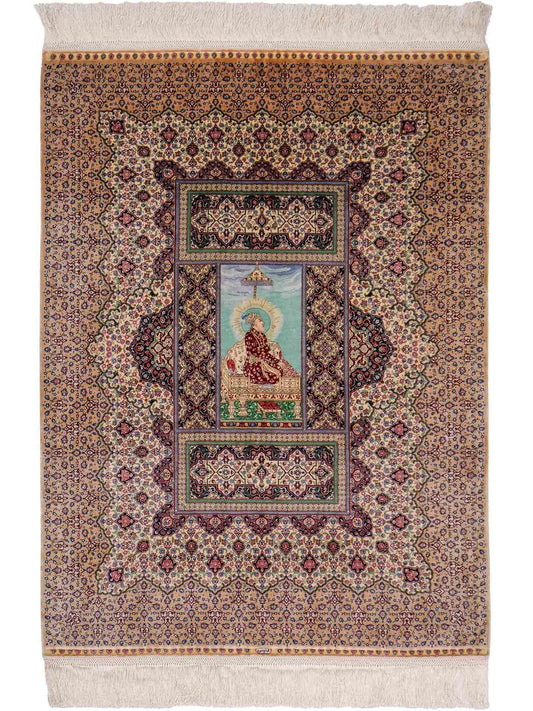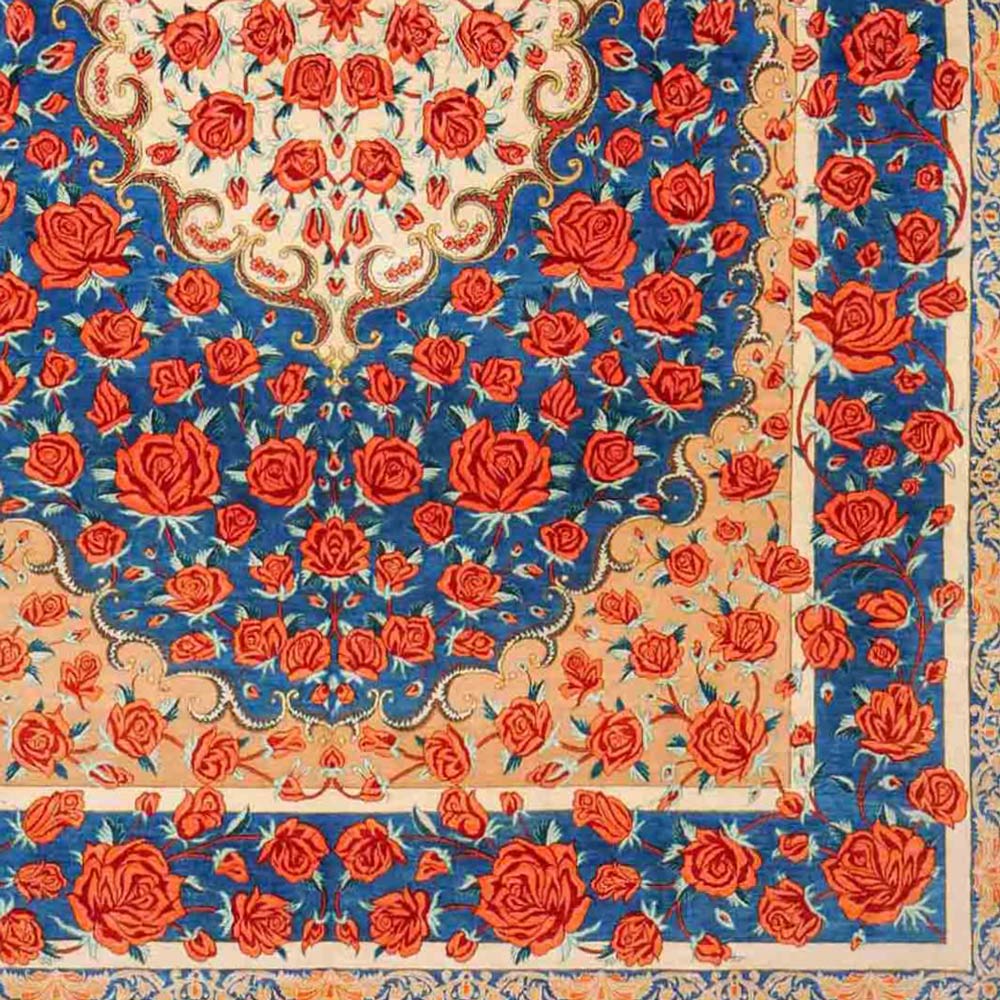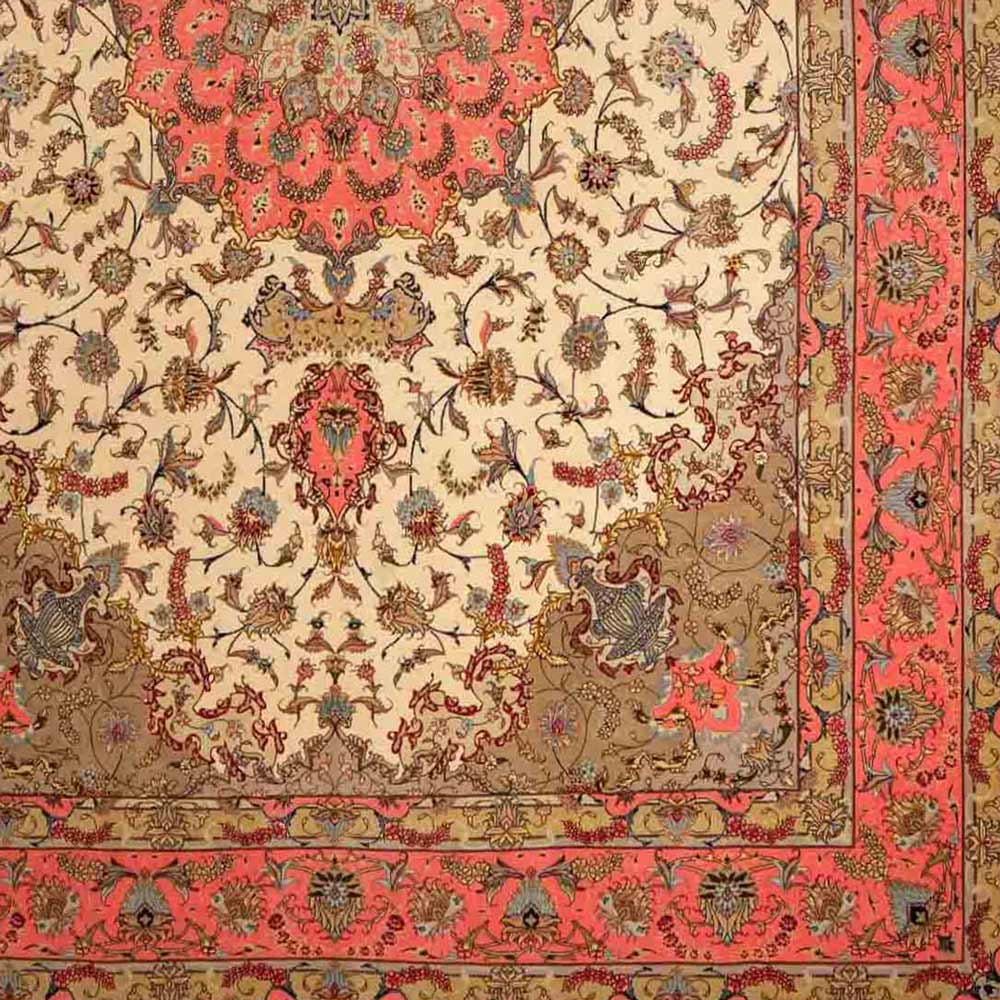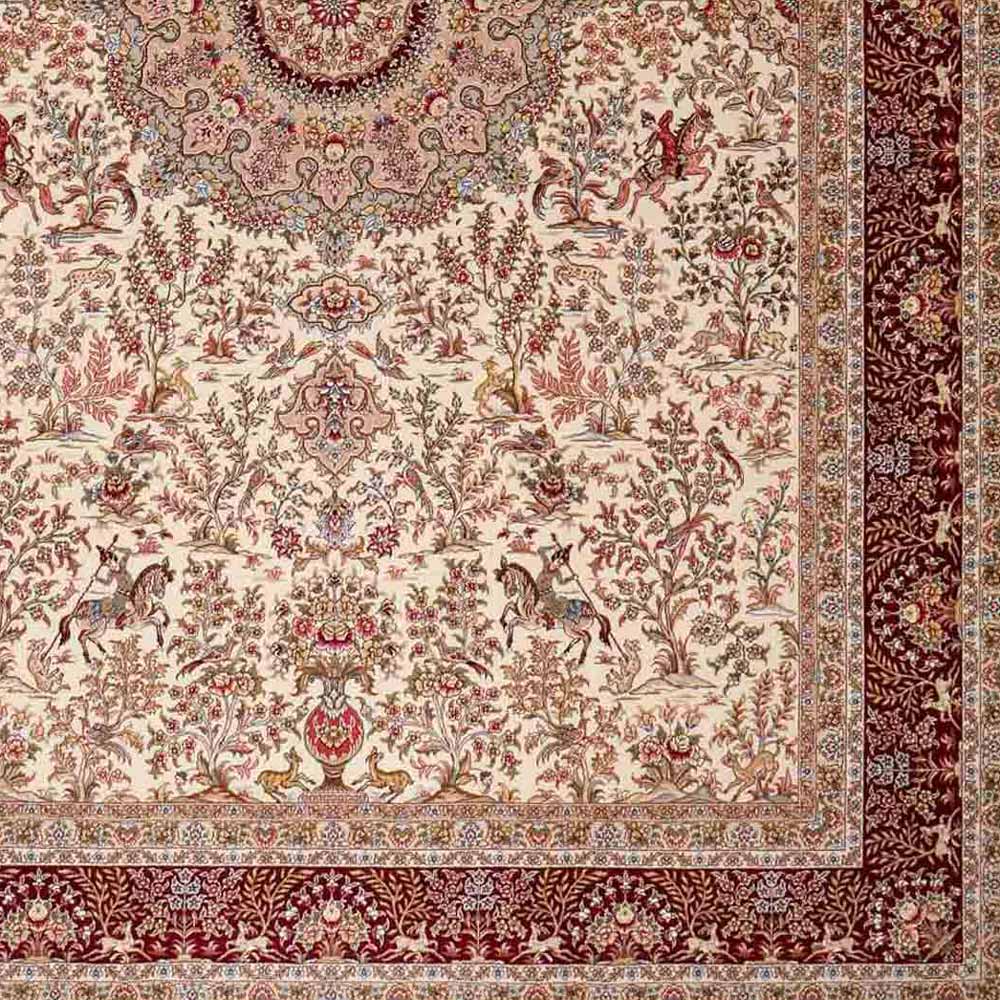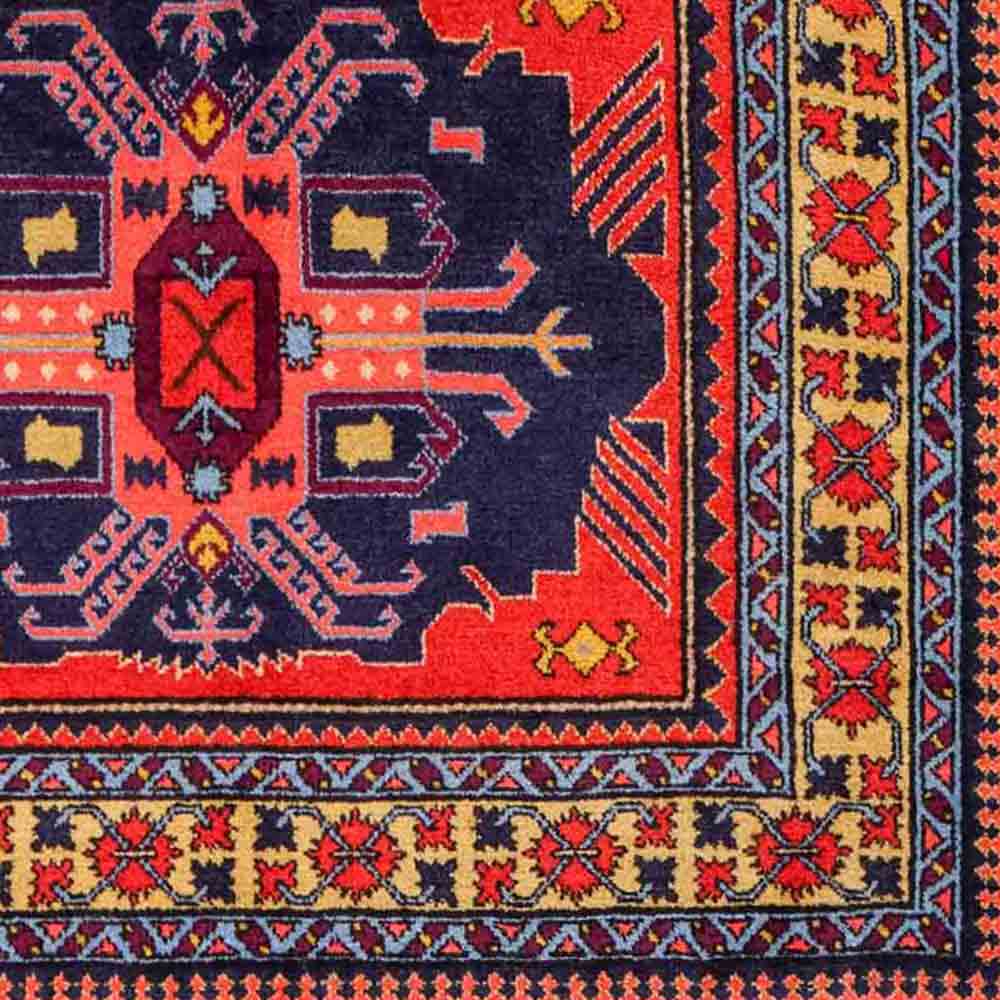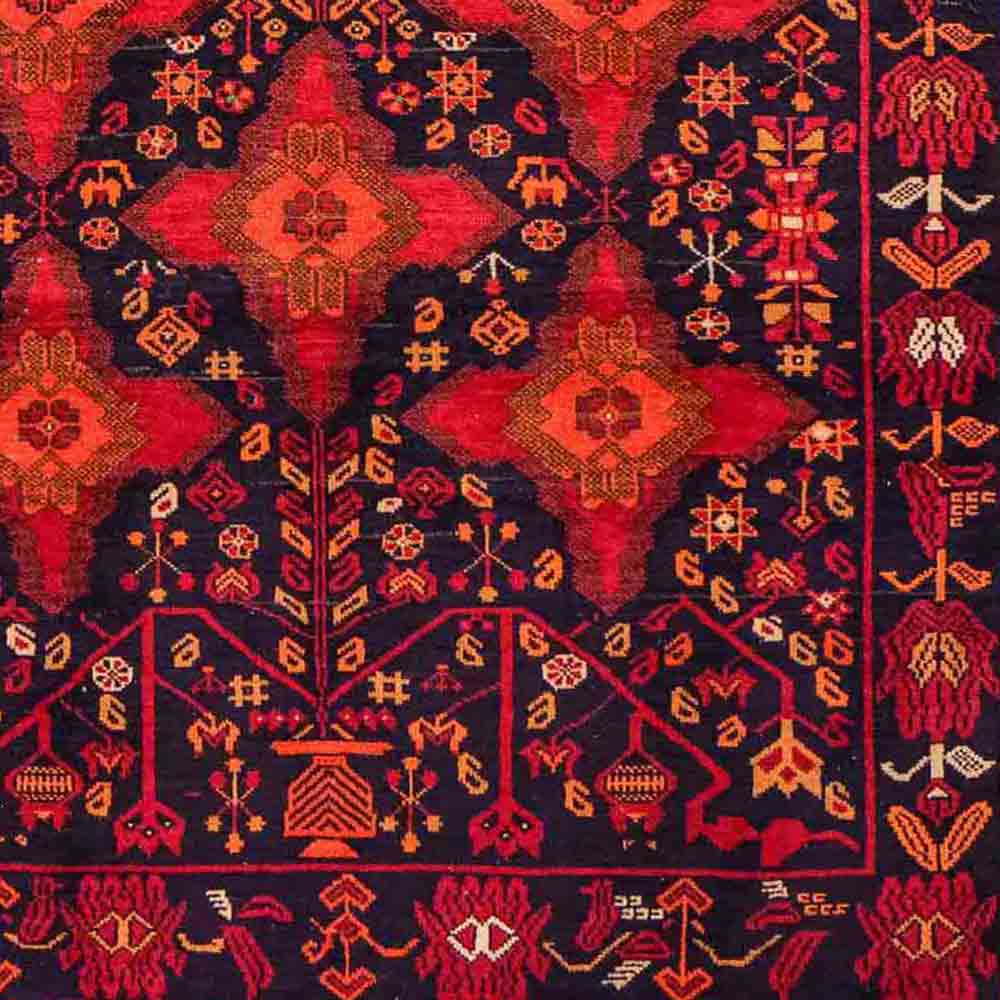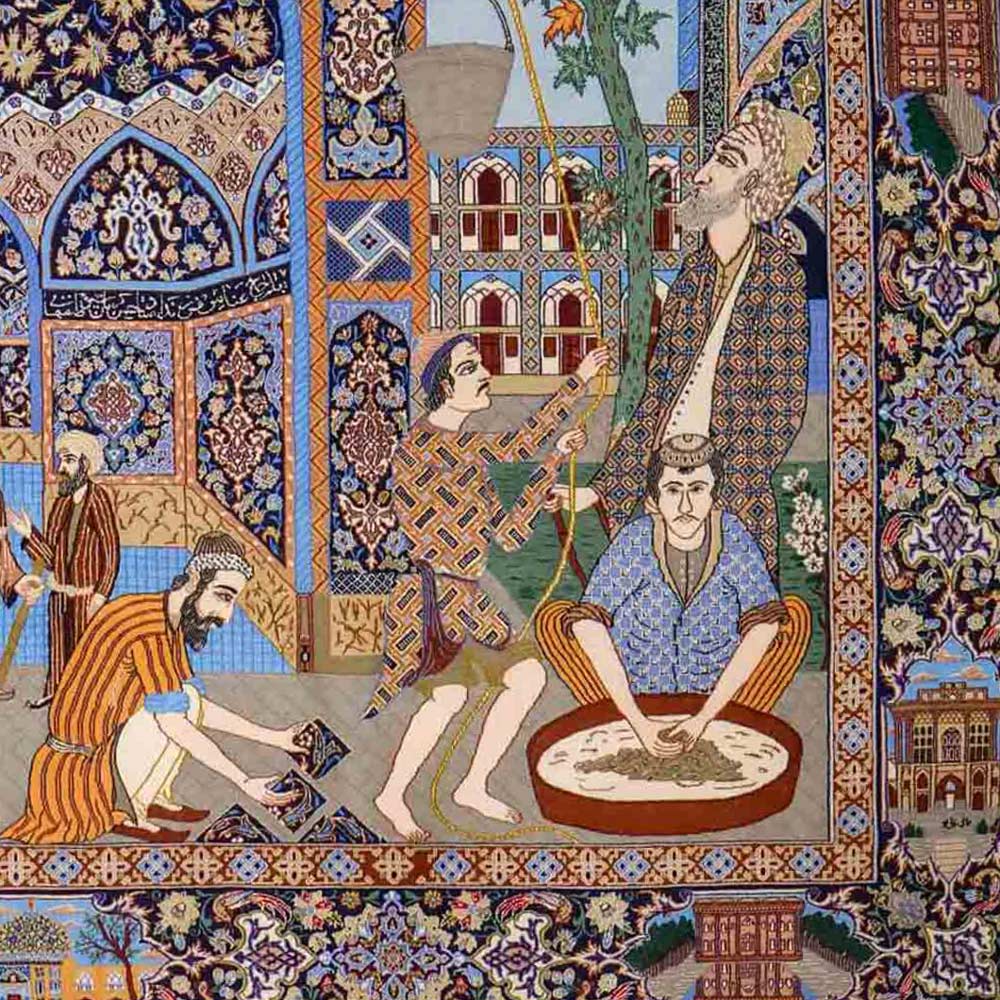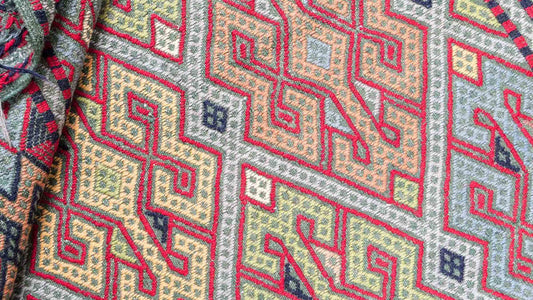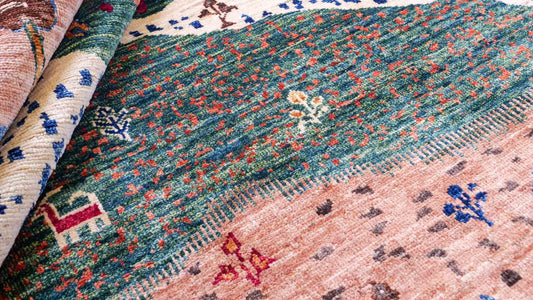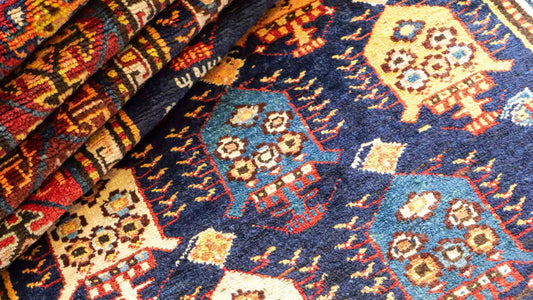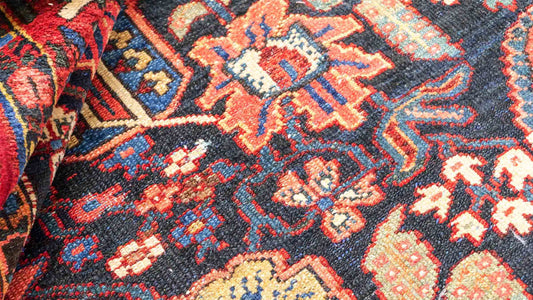
Qom
Daniel KhademiElegance, perfection, and masterful artistry – Qom rugs are among the most exclusive and coveted masterpieces of the Persian weaving tradition. Their unmatched knot density, luxurious silk sheen, and sophisticated designs have made them a worldwide synonym for luxury, value, and timeless beauty.
Qom Rugs at a Glance – Key Facts
- Origin: City of Qom / Qum, the cultural and religious heart of Iran
- Materials: Finest silk, premium wool, some plant-based & mineral dyes
- Design: Floral patterns, medallions, animal depictions, tableau, religious motifs
- Knot Density: Extremely high (up to 1.6 million knots/m²), asymmetrical Senneh knots
- Quality: Outstanding craftsmanship, meticulous detail, global reputation for perfection
- Value: Highly stable in value, sought-after collector’s items, strong appreciation potential
- Care: Demanding; professional cleaning often recommended (see full care tips below)
- Investment: Cultural heritage and long-term value – rare collectibles for connoisseurs
Explore our curated collection of exclusive Qom Rugs & Designs —find your one-of-a-kind masterpiece today!
Geography: The Center of Persian Rug Weaving
Qom (Qum), a city of remarkable beauty and cultural depth, lies in central Iran, about 150 kilometers south of Tehran, nestled in the scenic Zagros Mountains. Not only does Qom stand out geographically, it’s also a major hub for Persian rug artistry.
Situated at an elevation of 1,170 meters, Qom is surrounded by a lively landscape filled with historic and religious landmarks. The city is famed for blending tradition and modernity, attracting art lovers and tourists alike who come to admire the exquisite handmade rugs produced here.
Qom’s strategic location on historic trade routes enabled it, over centuries, to gain a reputation as a weaving center. Many world-renowned Qom rugs feature elaborate patterns, vivid colors, and traditional Iranian motifs.
Family-run workshops, with skills and know-how passed down for generations, draw from the area’s natural resources and local materials to create unique works of art. The combination of geography, rich history, and craft tradition makes Qom an exciting destination for rug connoisseurs and newcomers alike.
History: How Qom Conquered the Rug World
Rug weaving in Qom dates back to the late 19th and early 20th centuries. As a religious center, especially celebrated for its Shiite Islamic shrines, Qom saw both population and craft skill flourish as more pilgrims visited the city.
The first Qom rugs gained recognition in the 1920s, when the region began to market its traditional craft with purpose and vision. The rug industry soon became a vital economic pillar, supporting countless local families.
In the ensuing decades, Qom’s rug sector truly took off, responding to global demand for high-end Persian carpets. Local artisans blended designs and techniques borrowed from other famous weaving centers like Isfahan and Nain. This creative synthesis gave rise to a unique Qom style: extraordinarily high knot counts, intricate designs, and the use of the finest materials—silk, wool, and cotton.
Lighter colors and finely crafted, geometric and floral motifs have become hallmarks of Qom rugs, highly appreciated in art circles worldwide.
Today, Qom is recognized as a center of some of the most exclusive weaving traditions; many experts consider Qom rugs among the finest in the world. Their quality and artistry are showcased at both national and international exhibitions and fairs.
Weaving skills are passed down through generations, with each family bringing its stories and approaches. This deeply rooted tradition makes Qom not just a hotspot for collectors, but also a fascinating entry point for anyone interested in the rich world of Persian craftsmanship.
Societal & Economic Significance of Qom Rugs
For Qom rug weavers, the craft is much more than a source of income—it is a profound part of their cultural identity. Many craftspeople, especially women, use traditional techniques that have evolved and been handed down for centuries, allowing them to express creativity and pride in their craft. Weaving also provides an important economic foundation, empowering both individuals and entire communities.
In Persian society, Qom rugs are more than artisan products—they’re potent symbols of tradition and prestige. Families display Qom rugs at festive events, weddings, and cultural gatherings, using them to signify taste, hospitality, and status. They help preserve local identity and heritage.
Economically, Qom rugs are vital for the region and the entire country. International demand drives exports, creates jobs, and enhances the recognition and reputation of Persian carpets around the globe. Related trades, such as furniture retail and design, benefit considerably from Qom’s thriving rug sector. Exhibitions, fairs, and artisan exchanges further amplify the appeal and economic benefit of these unique textiles.
Qom Rugs in Contemporary Art & Global Trends
Qom rugs have secured a place in both traditional interiors and contemporary art. Designers and artists often use these rugs as inspiration or even install them as art pieces—lifting rug artistry far beyond mere utility. Galleries and exhibitions help elevate their artistic and cultural reputation.
Recently, the Qom rug market has adapted to global trends: there is growing demand for sustainable, ethically produced, one-of-a-kind handmade pieces that stand out as both functional and beautiful works of art. Traditional designs are increasingly combined with modern elements and lighter color palettes, making Qom rugs a perfect fit for diverse contemporary living spaces.
From Raw Material to Masterpiece: The Qom Rug Production Process
1. Selection of High-Quality Silk or Wool:
Production begins with selecting only the best silk or wool—often from sheep bred in mountain regions for their fine, durable fleece. Qom’s silk is especially prized for its unmistakable luster and soft feel.
2. Natural Dyeing:
Dyestuffs are carefully sourced from local plants or minerals—onion peels and pomegranate rinds, for example—to produce colors that remain vibrant over decades.
3. Pattern & Design:
Master weavers follow intricate, time-honored cartoons (design templates), weaving in patterns and stories inherited through generations. Warp threads are stretched across sturdy frames and the weaving—predominantly with the asymmetrical Senneh knot—can take months or years. Meticulous coordination ensures color and pattern consistency.
4. Finishing:
After knotting, rugs are washed to enhance their softness and set the dyes, then trimmed and the edges are ornamented for durability and a flawless look. Special treatments, like oiling or selective coloring, may add extra brilliance or distinct artistic effects.
The Result?
A unique textile artwork reflecting the region’s stories, traditions, and artisan passion—coveted by collectors worldwide.
The Measure of All Things: Knot Density & Technique
What sets Qom rugs apart is their extraordinary knot count—starting at about 300,000 knots per square meter and reaching up to 1.6 million or more. This allows for extremely detailed designs and a particularly soft, sensual surface texture.
Even rugs with the same base patterns become unique pieces, with subtle differences adding to their character and charm. The combination of supreme materials, masterful knotting, and painstaking attention to detail makes Qom rugs among the most valuable and sought-after in the world.
Qom Designs & Motifs: Symbolism Meets Creative Expression
- Floral Ornaments: Rich, intricate florals inspired by Persian nature—roses, lilies, and lotus—represent vitality and the eternal cycle of life.
- Central Medallions: Medallions in various shapes and sizes provide harmony and aesthetic balance.
- Tableau & Pictorial Rugs: Many Qom rugs depict scenes of daily life, hunting, or celebration, offering a window into Persian culture.
- Animal Motifs: Stylized or realistic birds, deer, or lions—often integrated into floral designs—symbolize qualities like strength, grace, and freedom.
- Religious & Spiritual Motifs: From holy verses to spiritual scenes, these elements reveal deep faith and cultural substance.
Color Palette & Diversty of Qom Rugs
Natural dyes yield vibrant, durable colors:
- Red: From fiery cardinal to deep crimson or burgundy—associated with joy, strength, and celebration.
- Blue: Ranging from navy to turquoise—standing for spirituality, peace, and transcendence.
- Beige & Cream: Create calm, balance, and highlight intricate details.
- Green: Symbolizes abundance, fertility, and renewal.
- Gold: Signifies wealth and grandeur—often used for accent and opulent effect.
- Other: Browns stand for coziness and stability; black defines contours and creates dramatic contrast; violet is a nod to creativity and wisdom.
Each color and element is loaded with meaning, making every Qom rug a true work of storytelling art.
Qom Rugs Vs. Other Persian Design Classics
| Feature | Qom | Isfahan | Nain | Gabbeh |
| Material | Silk or fine wool | Wool with silk | Wool with silk | Coarse wool, rarely silk |
| Knot density |
300,000–1.600,000 knots/m² |
600,000–1,400,000 knots/m² |
200,000–1,200,000 knots/m² |
40,000–100,000 knots/m² |
| Patterns |
Floral, medallion, animals, tableau, religious motifs |
Floral, medallion, arabesque | Floral, medallion, arabesque | Geometric, minimalist |
| Finish |
Highly lustrous, silky |
Subtle sheen | Subtle sheen | Matte to low sheen |
| Color |
Vibrant, gold, red, blue, lots of cream/white |
Bold, blue, red |
Blue, beige/ivory | Bold, earthy, primary tones |
| Value |
Premium, highly stable | Premium, strong appreciation | Upper segment | Entry to mid, accessible |
Checklist for Qom Rugs: Quality & Authenticity
- Is the rug made from pure silk or premium-quality wool? ✔
- Does it have an exceptionally high knot density (at least 300,000 knots/m²)? ✔
- Are the patterns fine and intricate (e.g., floral motifs, medallions)? ✔
- Do the colors have a silky sheen and appear vibrant yet natural? ✔
- Are the edges hand-finished and is the overall craftsmanship flawless? ✔
- Is an authenticity certificate or proof of origin included? ✔
- Is there no chemical smell (indicating natural materials and dyes were used)? ✔
- Is the weaving on the back neat and the pattern clearly visible? ✔
- Does the rug feel pleasantly soft, yet sturdy and resilient? ✔
- Are care and cleaning instructions clearly provided? ✔
Tip:
If you can check all these boxes, you’ve ensured the quality and authenticity of your Qom rug!
Care & Longevity: Preserving Your Qom Rug
Keeping Your Qom Rug Radiant for Generations:
- Vacuum regularly with gentle settings; do not beat the rug
- Blot spills quickly with lukewarm water and a clean cloth
- Avoid direct sunlight to prevent fading
- Professional cleaning every 1-2 years is highly recommended
- For more detailed advice, visit our blog post: *How to Care for Hand-Knotted Rugs*
Styling Tips: Decorating with Qom Rugs
Qom rugs are incredibly versatile and elevate every interior. Try these expert ideas:
- Centerpiece: Place your Qom rug as the visual anchor of a living room—surround with sofas and accent chairs for iconic luxury.
- Boho Chic & Modern: Qom rugs complement bohemian interiors filled with art, colorful pillows, and natural textures. Their vivid hues and patterns suit creative flair.
- Minimalist Elegance: Soft-toned Qom rugs in modern, clean settings create contrast and warmth without disrupting simplicity.
- Rustic Ambiance: Earthy, vintage Qom rugs harmonize beautifully with wood and heritage furniture in country or lodge looks.
- Traditional Influence: Hang them as wall art, display them under dining sets, or by the fireplace—pair with antiques or rich fabrics to emphasize tradition.
Qom Rugs as Collectibles & Investments
Purchasing a Qom rug means acquiring art, historic craft, and lasting value.
- Value Appreciation: Top-quality Qom rugs often gain value over time, thanks to intricate technique, rare materials, and unique designs. Well-preserved examples are prized by collectors and have remarkable investment potential.
- Collector’s Items: Qom rugs come in an array of styles and sizes to satisfy every collector’s taste. A thoughtfully chosen Qom rug tells stories, becomes a family heirloom, and enhances exhibitions or private collections for generations.
In an age of mass production and disposable goods, handmade treasures like Qom rugs grow ever more relevant and desirable.
► For detailed tips & in-depth guidance, see our blog post: *Are Hand-Knotted Rugs a Good Investment?*
Request a free personal style or purchasing consultation for Qom rugs today!
FAQ – Frequently Asked Questions About Qom Rugs
What distinguishes genuine Qom rugs?
► The very finest silk, exceptional knot counts, sophisticated patterns—handmade with heritage.
Are Qom rugs suitable for everyday use?
► With proper care, very much so. They’re robust, especially ideal in less-trafficked areas or as wall art.
How can I identify an authentic Qom silk rug?
► Look for certification, subtle sheen, high enumeration, and a clear origin label.
Do Qom rugs increase in value?
► Exclusive, well-preserved Qom rugs with unique designs regularly appreciate—read more in our guide: *Are Hand-Knotted Rugs a Good Investment?*
Where can I buy high-quality Qom rugs?
► Only from specialist dealers and reputable online shops—always check for certificates of authenticity and expert advice. At JUPITER Intl, every hand-knotted, hand-tufted, and handwoven rug comes with a Certificate of Authenticity.
Conclusion: Cultural Heritage Meets Contemporary Elegance
Qom rugs are breathtaking works of art—expressions of boundless creativity and skill, integral to Iran’s religious and cultural history.
Explore our curated collection of exclusive Qom Rugs & Designs —find your one-of-a-kind masterpiece today!
Related blogs & blog posts you might also be interested in:
→ Design Classics, Countries of Origin, Carpet Materials, Carpet Guide

